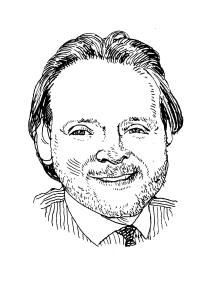
In last week’s column, we presented an overview of the entire New York City building sales market. This week, we will look at how Manhattan in particular performed. (Next week, we’ll cover the outer boroughs.)
In 2009, there was $4.2 billion in building-sales activity in the Manhattan submarket. This total was down 79 percent from the $19.8 billion in 2008 and down 92 percent from the $52.5 billion record level achieved in 2007. Of this total, approximately 47 percent, or just under $2 billion, were office building sales and about 12 percent, or about a half-billion, was in the multifamily sector. The $4.2 billion in sales represented 67 percent of total New York City sales, which registered just $6.3 billion last year. The Manhattan percentage reached a record 84 percent of the entire market in 2007.
The number of buildings sold in Manhattan in 2009 was 322, down 49 percent from the 636 buildings sold in 2008 and down 67 percent from the 999 sold in 2007. To give perspective to this activity, we look at the overall turnover rate by dividing the number of properties sold by the total number of buildings in the submarket. In the Manhattan submarket (south of 96th street on the East Side and south of 110th street on the West Side), there are 27,649 buildings. Of this total stock, over the past 25 years, the average turnover rate has been 2.6 percent.
The lowest we had ever seen was 1.6 percent in 1992 and 2003. Both of these years were at the end of recessionary periods, and both saw peaks in cyclical unemployment. We had always presumed that the 1.6 percent turnover represented a baseline, as the only people selling in 1992 and 2003 were people who absolutely had to. This assumption was shattered in 2009, as the 322 properties sold represented a mere 1.17 percent of the total stock of properties in the submarket.
The average sale price of a Manhattan property in 2009 was $12.9 million. This figure was down 75 percent from the remarkable average of $52.5 million attained in 2007. Interestingly, if we look at activity in individual quarters, the biggest deviation is seen when comparing the first quarter of 2007, in which the average building sold had a price of $63.7 million, to the second quarter of 2009, when the average price was $4.6 million. This is a 93 percent reduction.
With regard to pricing trends, it is not surprising to note that multifamily property values held up best while office buildings were hit the hardest. In the multifamily sector, rent regulation keeps rents artificially low, which minimizes downside risks in the operation of these buildings, provided, of course, that reasonable debt levels are employed. In 2009, the average capitalization rate for walk-up buildings was 5.05 percent, up just 65 basis points from its low in 2007. The average capitalization rate on elevator buildings rose to 4.52 percent, up 142 basis points from its low.
In terms of average price per square foot, elevator buildings averaged $452 per foot, a 13.4 percent reduction from the peak; walk-up buildings averaged a surprising $482 per square foot, down 20.1 percent from the peak. This was the first time that we saw walk-up pricing per square foot higher than elevator prices. We believe this is due, in part, to the fact that tenancy turnover in walk-up buildings is significantly higher than in elevator buildings. This causes rents per square foot in walk-ups to grow at a much faster rate than those in elevator buildings.
Mixed-use properties, those with at least 20 percent of the square footage containing retail space with apartments above it, had a 2009 average capitalization rate of 5.58 percent, up 88 basis points from its low. The average price per square foot for mixed-use properties was $599, down 45.6 percent from its peak.
Retail properties had average cap rates of 7.07 percent, up significantly from the low of 5.39 percent in 2007. The average price per square foot of a retail property was $1,071, down 46 percent from a peak of $1,987.
There were 11 office buildings sold in Manhattan in 2009, which traded at an average price of $397 dollars per square foot. This figure was down 55 percent from the $886 peak in 2007. It is interesting to note that of these sales, the properties that were well leased, with modest lease rollover in the short term, had little market exposure, and prices were down only 25 percent for these buildings. Properties with substantial vacancy or significant lease rollover in the short term saw prices drop almost 70 percent.


